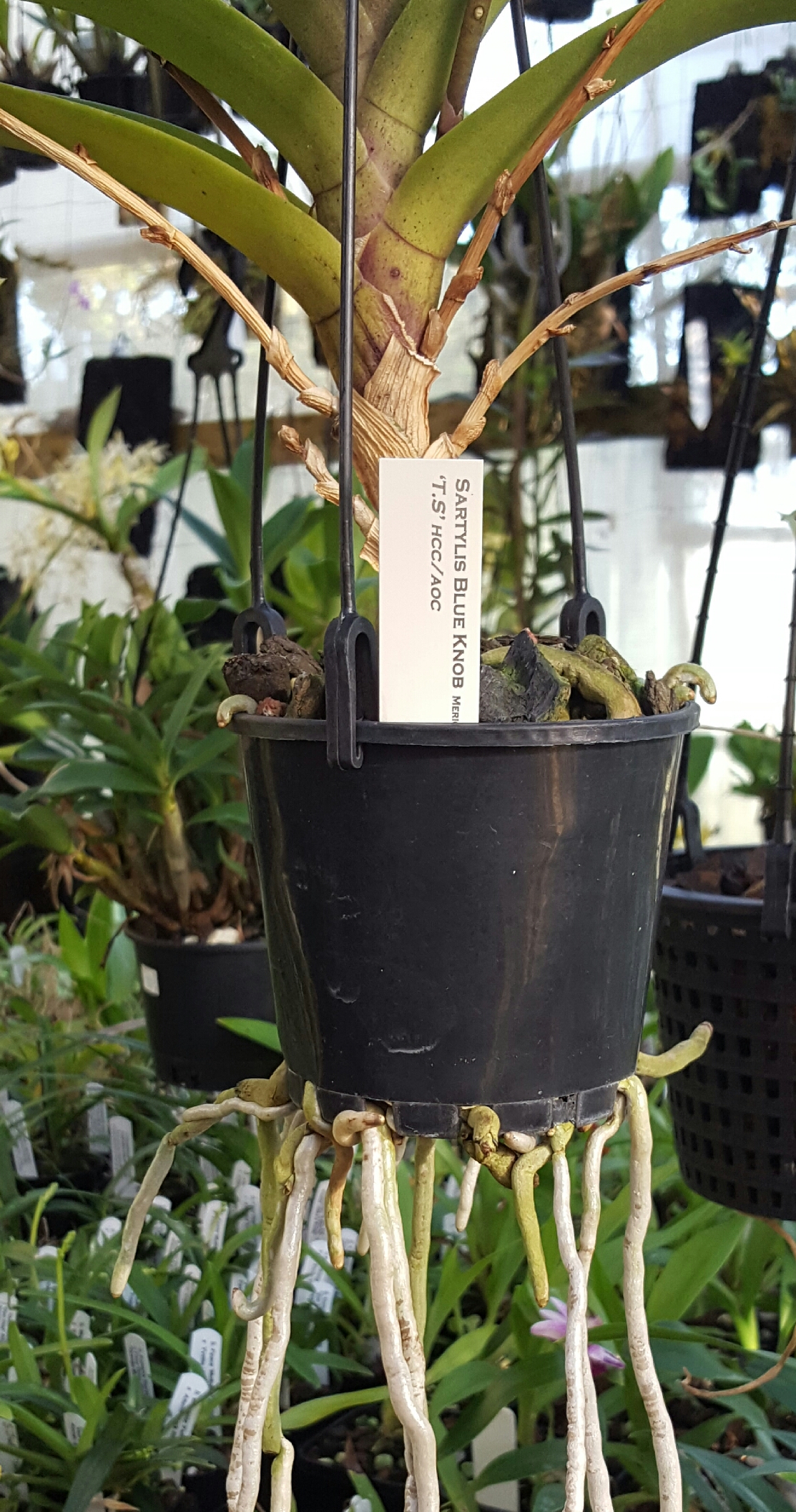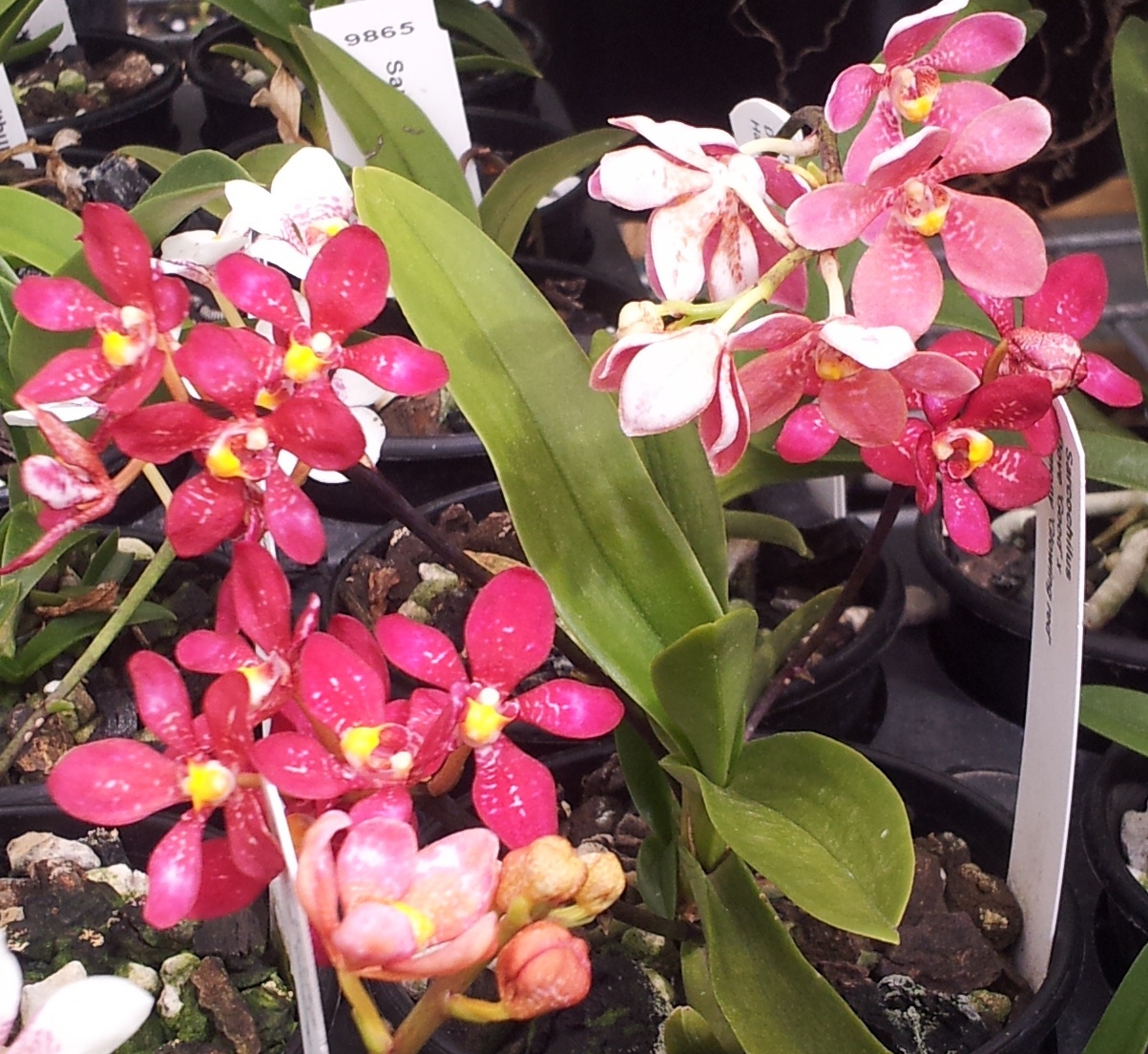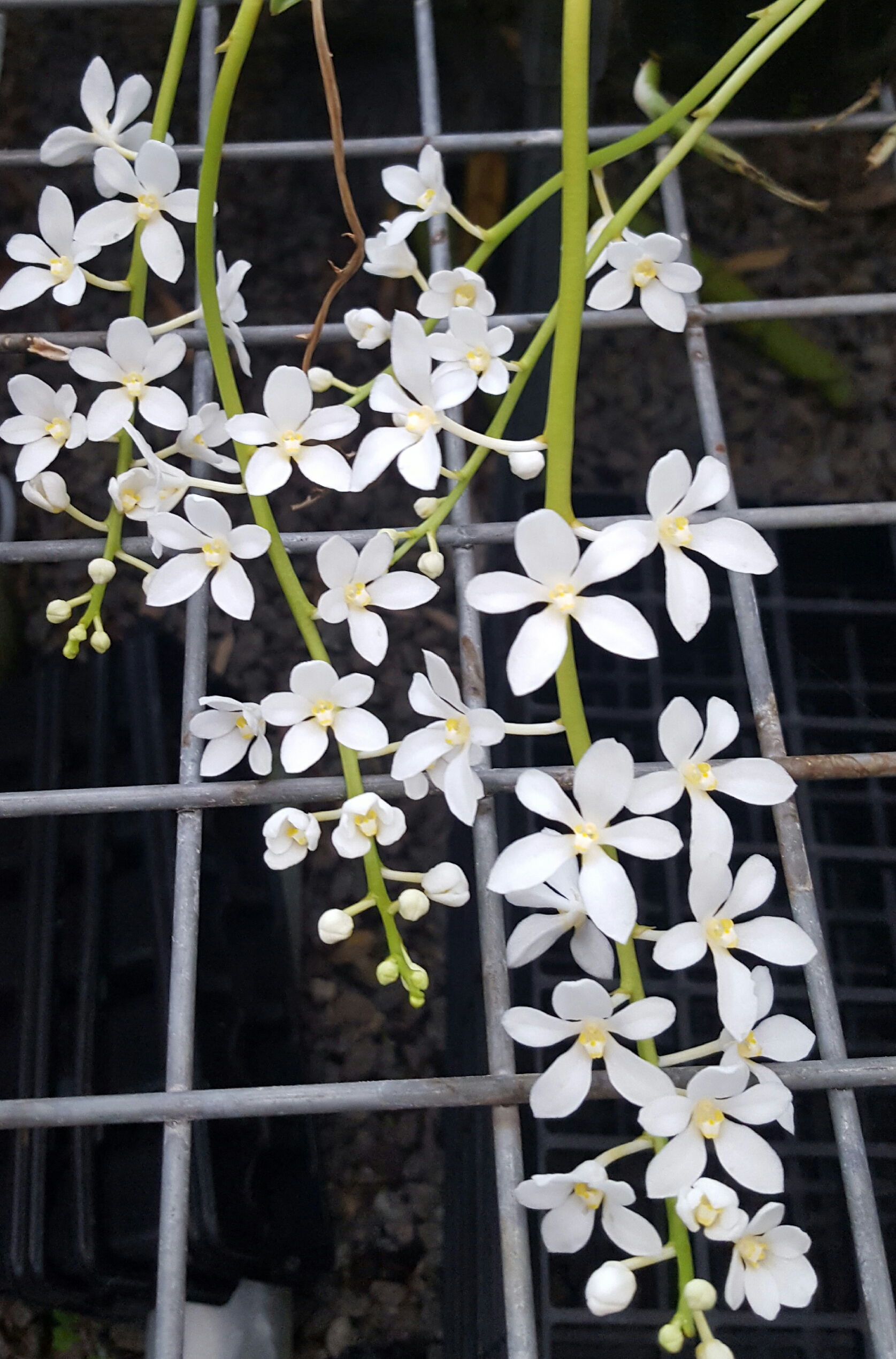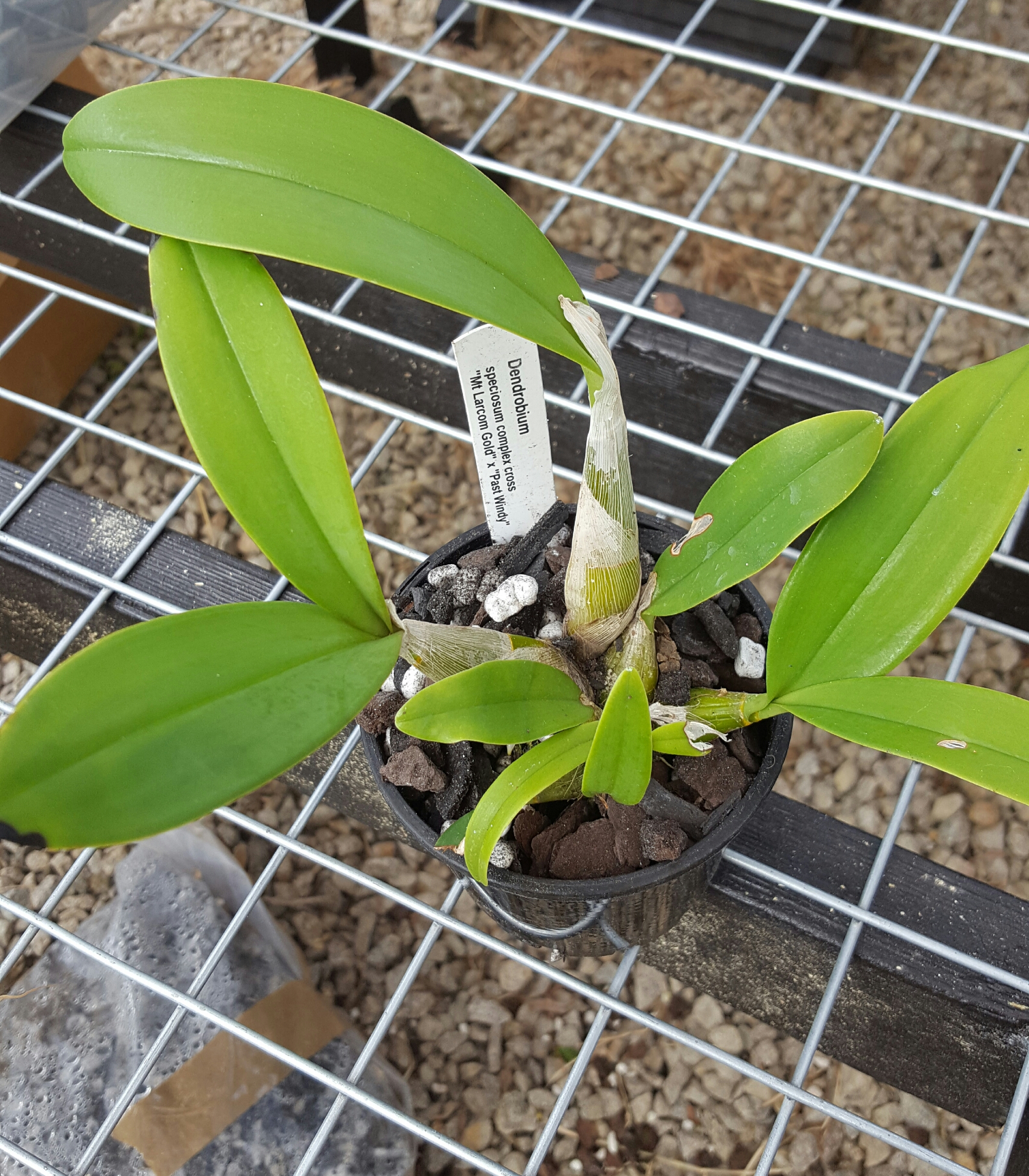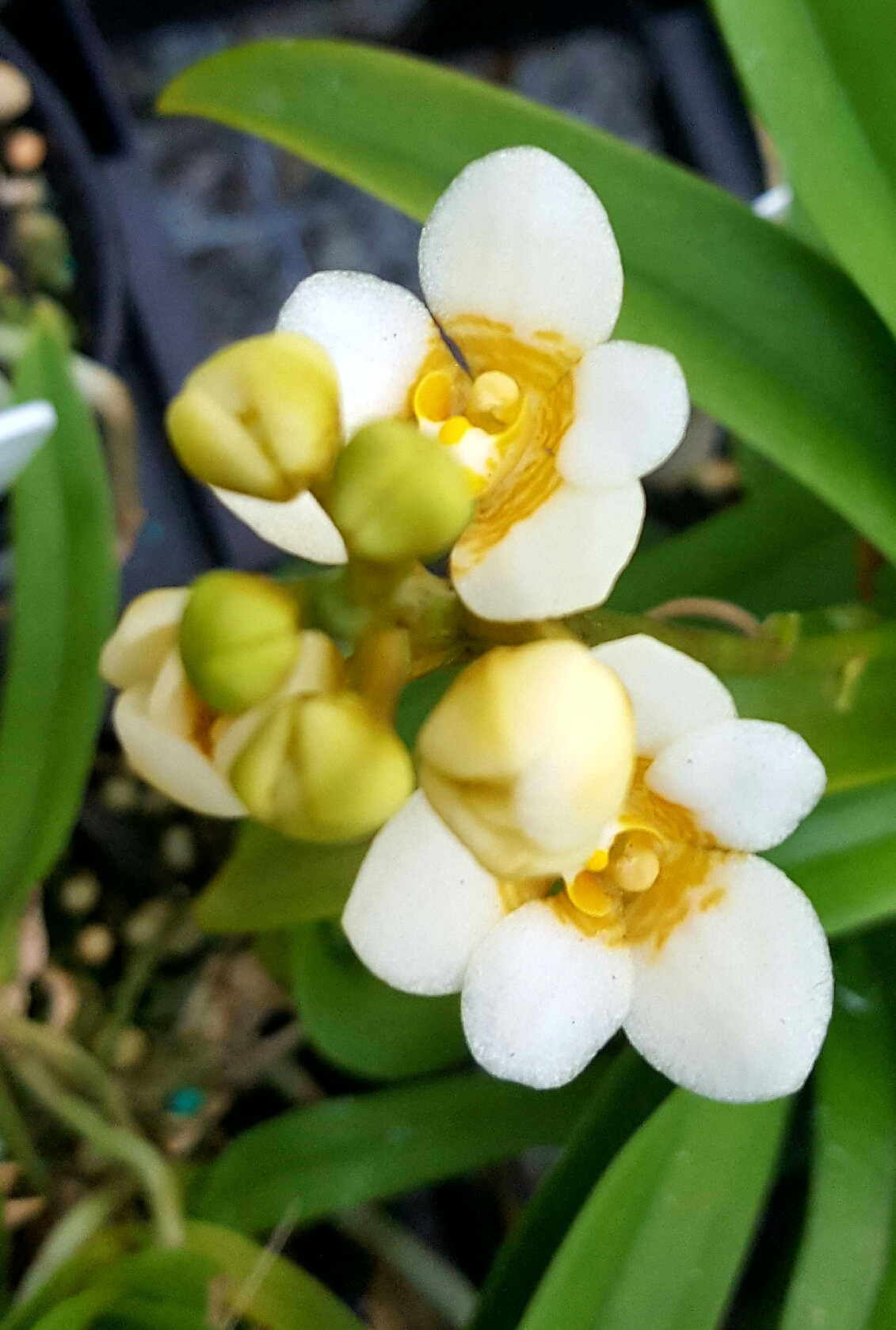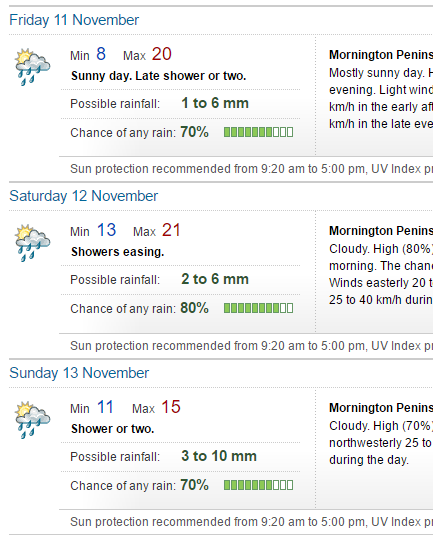We have been growing Sarcochilus for a while and have tried a lot of stuff…pretty much most stuff. Here are some of the mixes we have tried and some comments –
In our conditions its ideal for a mix to last 2 years with 3 + years very handy.
Rockwool and styrofoam mix – back in the 90s this is how I grew all my Sarcs (or mounted) – with great success. We have since tried a similar mix as well as rockwool grow blocks without the same success. I know some growers currently using rockwool grow block and rockwool mixes very successfully – I think the key is watering and temperature. When the temps are low the rockwool stays very wet for too long so back in the 90s I must have been more cautious with the application of water than I am now. And yes this is a 100% hydroponic style of growing technique.
Coconut peat / fibre – I have used this only in the form that some plants bought elsewhere come in it – I hate it. In our conditions in Melbourne it breaks down very fast, stays very wet and Sarcs hate it wasting away over a 12 month period.
Straight Perlite / Magic mix – yeah no thanks. If you love this stuff that is great for you but I don’t. Think backyard tomatoes vs hydroponic tomatoes from the supermarket – now tell me again how hydroponics is so great. Yes it allows very reproduce-able consistent results but not high quality results. + I am just a traditionalist.
Straight bark – as long as good quality bark there is no real problem here, use a chunky grade of bark. Without something to break up the bark and keep it more open (like pebbles) I have found the bark will become too waterlogged once it starts to break down (depending on the quality of the bark this will normally be in 1 – 2 years) this is in my opinion the main reason to add something like pebbles, scoria or perlite – yes it creates a slightly more open mix on day 1 but as the years wear on it really extends out the life of the mix by keeping it more open after straight bark would be no good. As plain bark I have found the Ausgro and also Orchiata barks very high quality and long lived.
Pebbles – there are various pebbles used, quartz, granite, scoria – which are best and why add them? The more northern growers use river pebbles / quartz pebbles most commonly (NSW) and many say the cold pebbles will help keep the roots of the plants cold on a hot day – down here in Vic I am not sure that keeping the roots cold is so important and as above I believe the main function of pebbles is to keep the mix more open – especially as it ages. If I was making my mix by hand (and not buy premixed mixes from Australian Orchid nursery which is just too easy to bother with anything else) I would use granite chips and/or expanded clay – sarcs often grow on granite (hartmannii) and granite has a strong paramagnetic energy (google paramagnatism for some good books if you are interested) its also likely that the plants get super small amounts of trace minerals from the break down of the rocks. The mix we use most of the time is Waynes due to its just so easy and he uses scoria – I believe because its lighter than granite / quartz for postal reasons. I have noticed (I think…) that hartmannii species plants do seem to quite like to grow with some quartz or granite chips in their mix – all our largest hatmanniis have this in their pots (ie they grew larger than their friends next door) and they also seem happy to sit in their pots for a very long time in this mix. I have one hartmannii that has been in a mix of bark + quartz for around 10 years and is now this year just looking like it might like some new mix. Perhaps a bit anecdotal evidence as only tested the theory on a few plants.
Perlite – perlite is just a replacement for pebbles in smaller grades of mix / smaller pots
Expanded clay – after trialing a range of mixes for a period of time we went to a bark + expanded clay mix. Expanded clay balls are nice and light and open up the mix like nothing else, creating the best root systems in our conditions. We have switched to Waynes mix for the reasons you will see below but if Wayne was not around i would go back to clay balls ( I would use a mix of clay balls, charcoal and pine bark, perhaps using some granite chips as well). Clay balls open the mix up quite a lot preventing water logging and allowing more watering overall – I think they could be quite good in northern NSW for this reason.
Charcoal – perhaps I am giving away a secret here or perhaps I am delusional but before i go on let me be clear – I hate charcoal. It gets all over your hands and is just so dirty and annoying but Sarcos love it. Its like steroids for them – I am not sure if its the potash from the actual charcoal or if the charcoal does something to the fertilisers we use that slants in the way of sarcs but it works. Time and time again I have had sarcs in 50mm pots or 80mm pots side by side – the only difference being one mix has charcoal and one doesn’t and in a 12 month period the sarcs with charcoal will be 100% – 200% or even 300% larger than the pots without charcoal. This is the result in our conditions – we have not noticed the same difference in Dens or Docs – maybe a slight benefit from the charcoal but nothing like the effect it has on sarcs.
We currently buy our mix from Wayne www.australianorchids.com.au wherever possible as it has the charcoal in and that avoids me sourcing mixing and handling all that crappy charcoal. If he is out or some other issue we use bark + clay balls or bark + perlite because charcoal is so crap to handle so we could not be bothered with it. (Waynes mix appears to be pine bark + charcoal + scoria in larger mix and perlite in the smaller sizes) I guess if we could not get Waynes mix anymore we would probably add charcoal to all the Sarc mix and not bother with any of the other Genus as for us it has not seemed to make as much difference.
Do you have some thoughts or feedback? If so please comment below!
